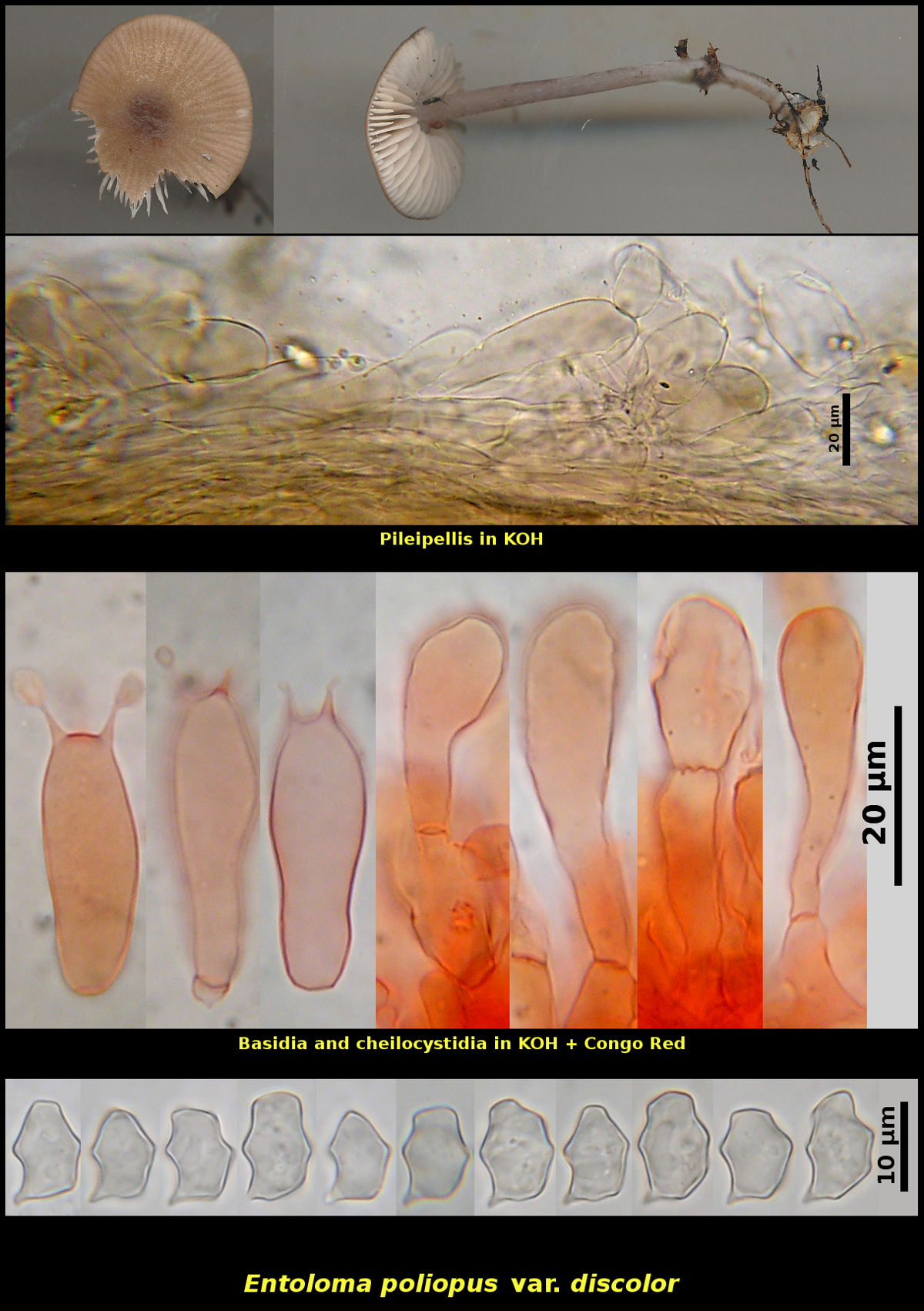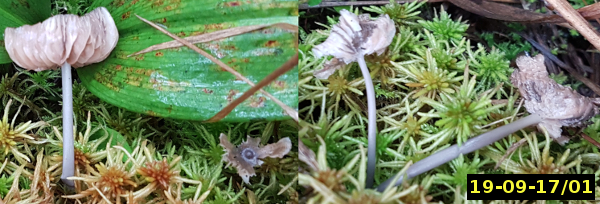Fleshy Fungi of New Brunswick >>
Entoloma poliopus var. discolor
Entoloma poliopus var. discolor Noordel.

Solitary amongst sphagna in fen, most closely associated with Thuja accidentalis and Alnus incana, Canoose Flowage Protected Natural Area, New Brunswick. (19-08-17]02)
Basidiospores pink in spore print, heterodiametric, 5- to 6-sided, 9.8-12.2 X 6.9-8.9 μm, D/d = 1.25-1.60 (average[27]: 11.0 X 7.7 μm, D/d = 1.44). Pileipellis a cutis with fascicles of clavate end cells, without clamp connections, lacking encrusting pigments but with brown vacuolar pigments. Cheilocystidia forming a continuous sterile margin, clavate, frequently septate, without clamp connections. Basidia clavate to subcylindric, 4-spored, not clamped at base

Usually associated with Sphagnum species and other mosses in wet areas. It is recognized by its brown conical pileus that may develop a central depression at maturity and by its smooth steel- to blue-grey stipe. Microscopically it has prominent clavate cheilocystidia, 4-spored basidia without a basal clamp connection and a pileipellis with clavate terminal cells. The hyphae lack encrusting pigments and instead have vacuolar pigmentation. The blue-grey colour of the stipe is not especially apparent in the illustration and is better seen in the field photograph of 19-08-17/01, collected in the same general area. Unfortunately, other than the typical colour of the stipe, this collection is overmature and not very representative of its species.
Entoloma poliopus var. poliopus, the typical variety, differs from var. discolor in having dark brown edges on the lamellae due to a brown pigment contained within the cheilocystidia.
Photograph: D. Malloch (19-08-17]01).